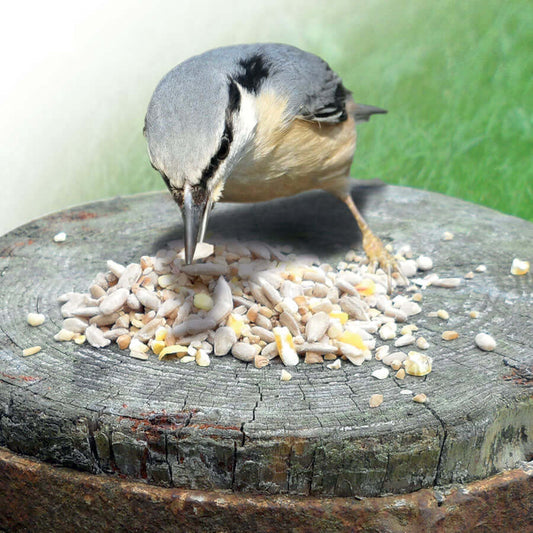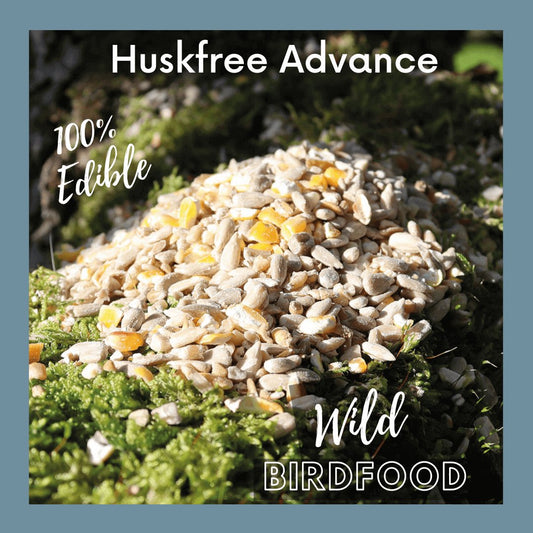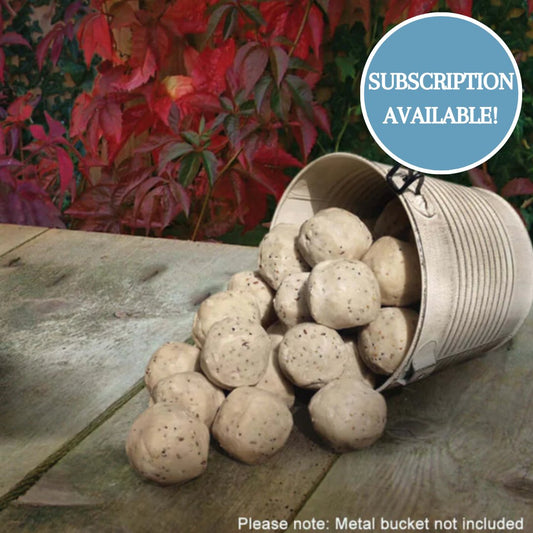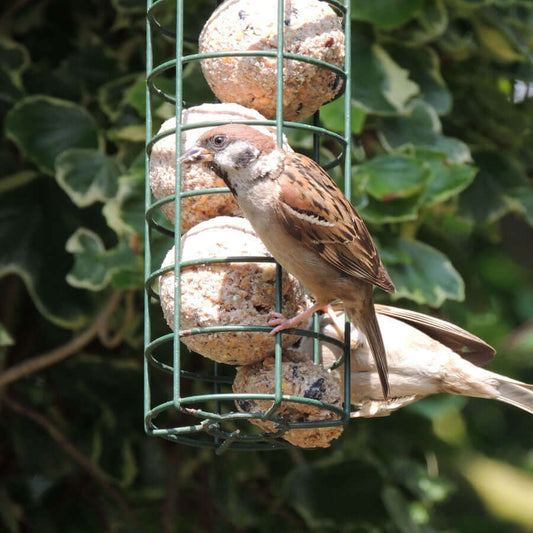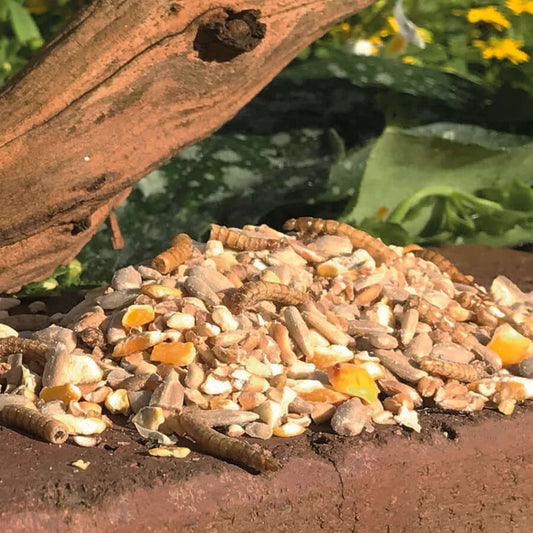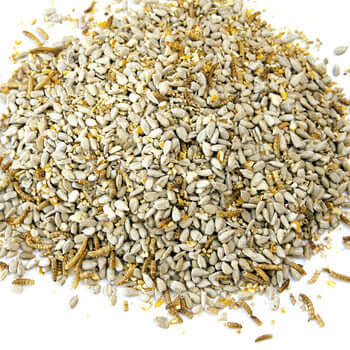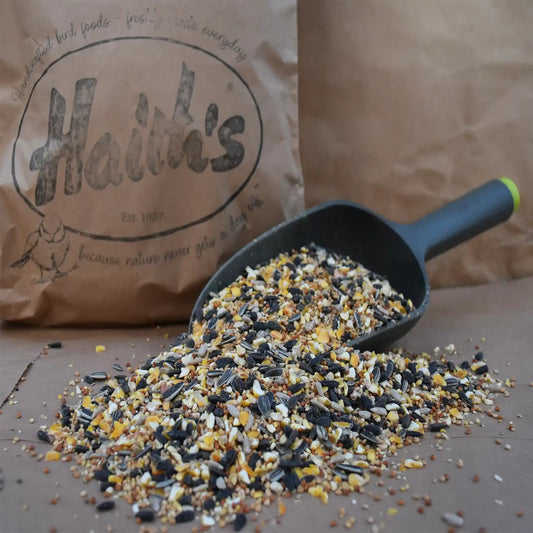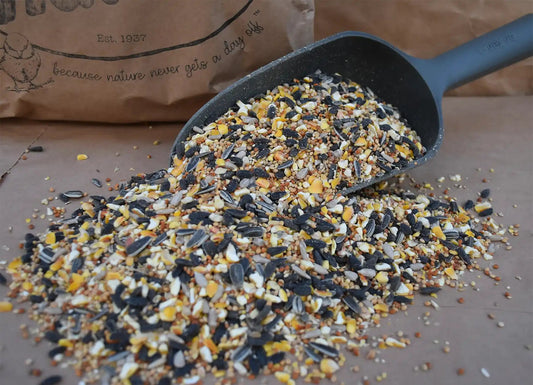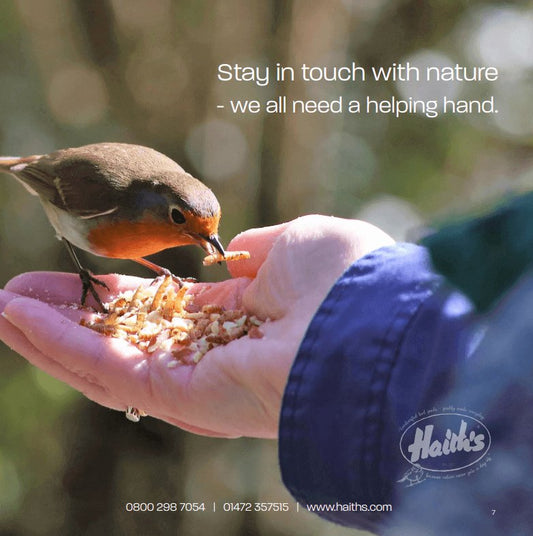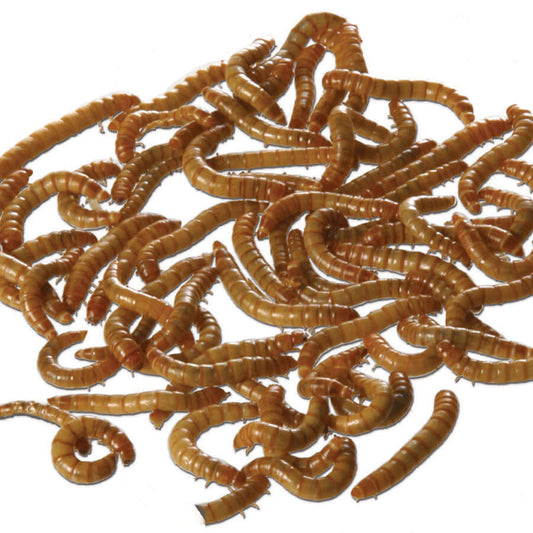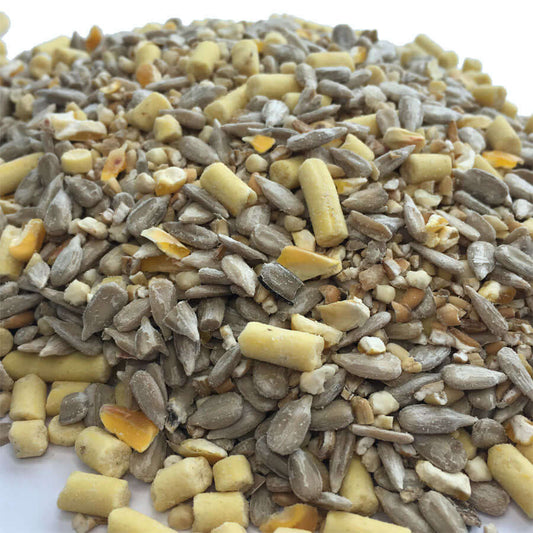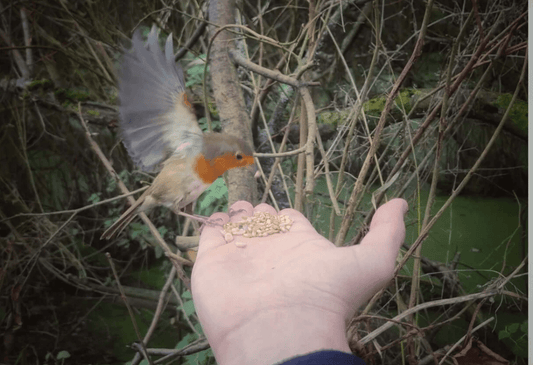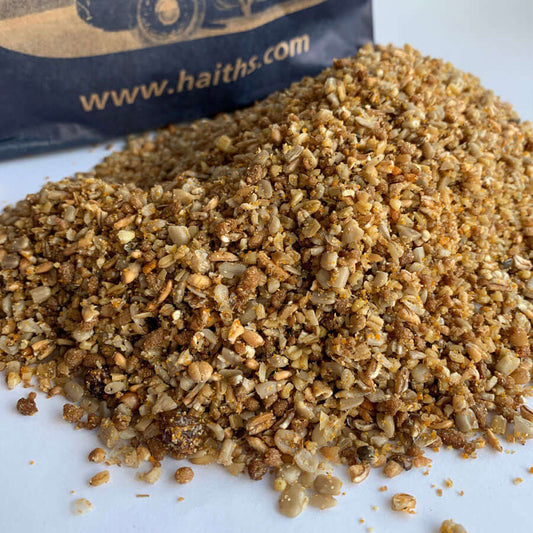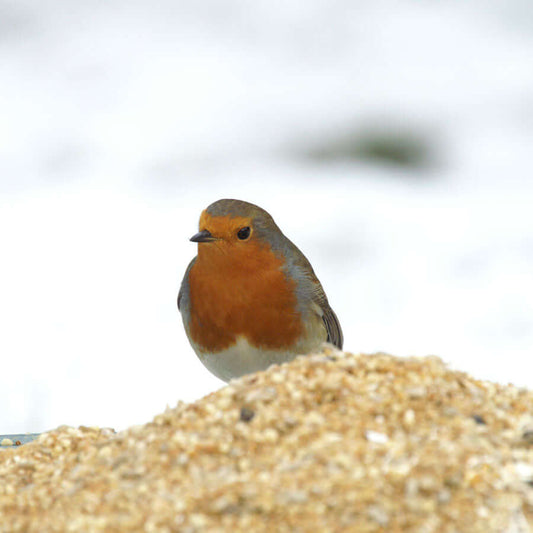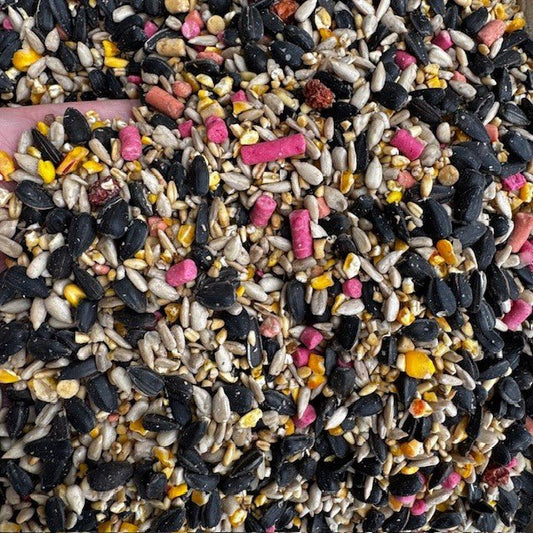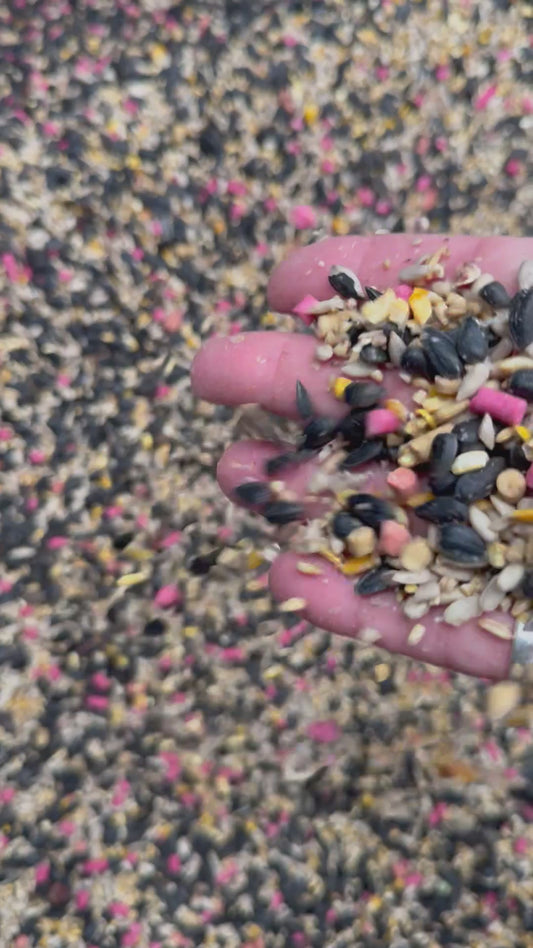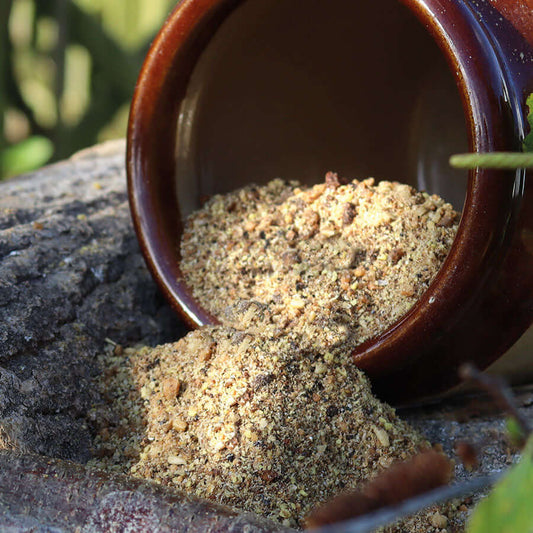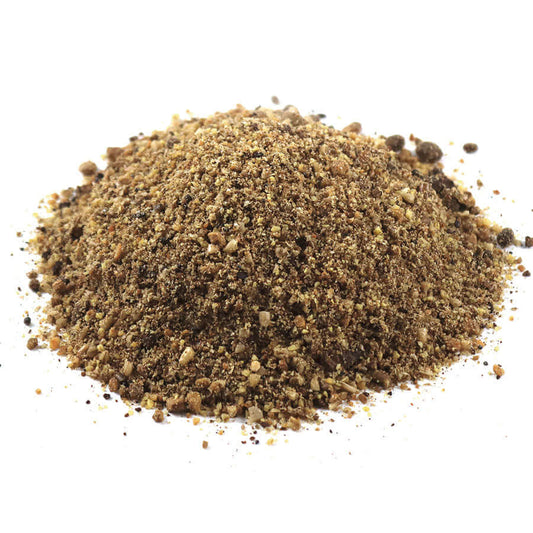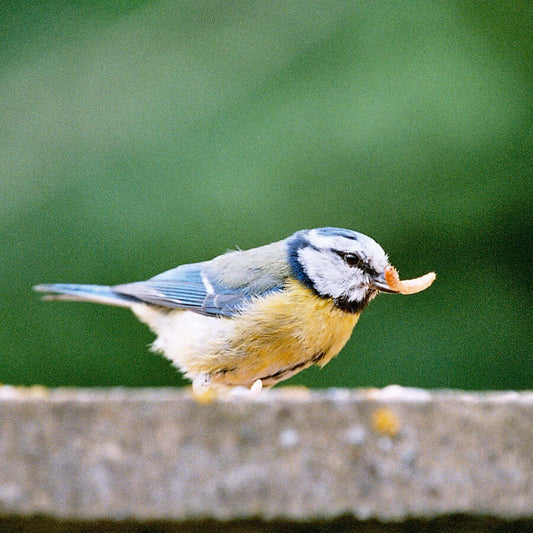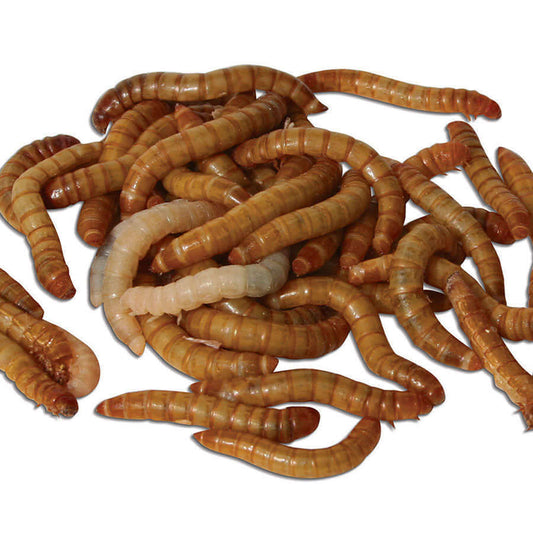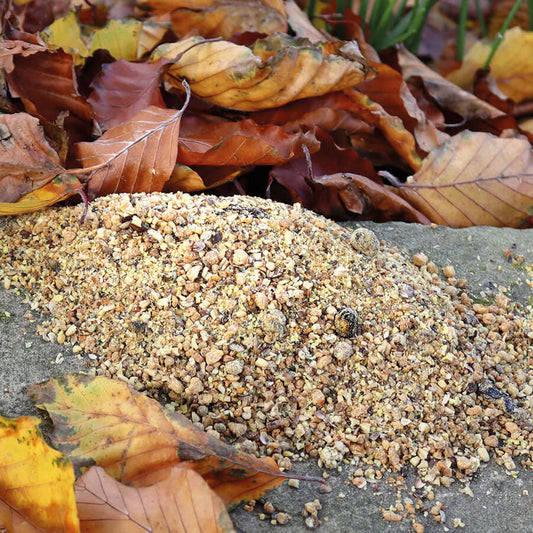Collection: What do Wrens eat?
It is surprising how common the tiny wren is but it breeds throughout Britain and may have as many as eight youngsters to a brood. It should be unmistakable with its warm-brown barred plumage and erect tail-cocking habit.
The wren has a remarkably loud and clear warbling song for such a small bird. It inhabits a very wide variety of habitats from remote mountain tops and sea cliffs and right into suburban parks and gardens. It is highly insectivorous and will forage through any nook or cranny in a tree or bush and will frequently venture into accessible buildings in the search of flies and spiders.
Wrens will take small mealworms offered on the bird table and will also be attracted by Prosecto Insectivorous Mix, and Golden Chorus. The wren is one of Europe's smallest birds and spends most of its time near the ground in bushes and thickets. They forage in dark, damp places (mainly under hedges) and feed on seeds, insects and spiders. Although they are small they have a loud vibrant distinctive song. Being brown in colour they are approximately 9-10cm long, have a wingspan of 13-17cm and weigh between 8-13gms only.
Their nests are made from balls of leaves and grass and they produce 5 or 6 eggs in 2 broods between April and July.
Try these bird foods:
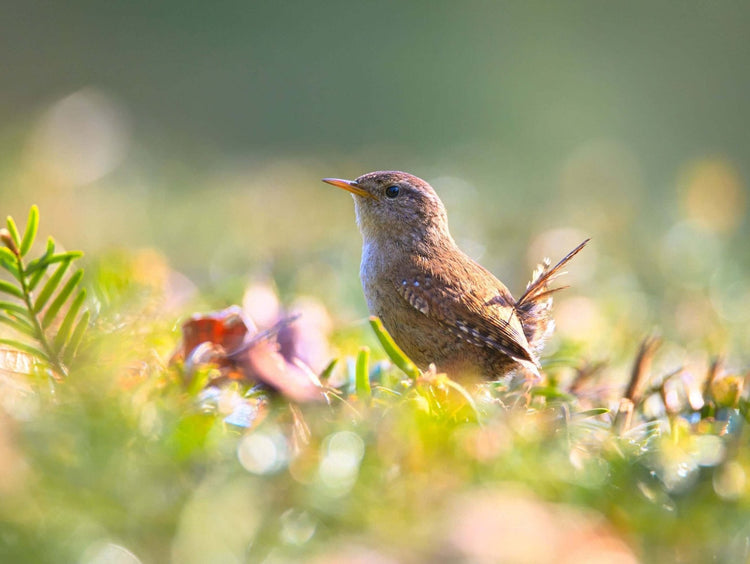
-
Sunflower Hearts - Premium Quality
Vendor:HAITH'S to HOME4.99 / 5.0
(203) 203 total reviews
Regular price From £4.99 GBPRegular priceUnit price / per£4.99 GBPSale price From £4.99 GBP -
Huskfree Advance™ - No Mess Wild Bird Food
Vendor:HAITH'S TO HOME4.87 / 5.0
(151) 151 total reviews
Regular price From £6.99 GBPRegular priceUnit price / per£6.99 GBPSale price From £6.99 GBP -
Great British Suet Fat Balls (no nets)
Vendor:HAITH'S to HOME4.89 / 5.0
(84) 84 total reviews
Regular price From £19.99 GBPRegular priceUnit price / per£19.99 GBPSale price From £19.99 GBP -
Super Value Fat Balls (no nets)
Vendor:HAITH'S to HOME4.55 / 5.0
(76) 76 total reviews
Regular price From £9.99 GBPRegular priceUnit price / per£9.99 GBPSale price From £9.99 GBP -
Huskfree Advance™ with Mealworms - No Mess Mix
Vendor:HAITH'S to HOME4.86 / 5.0
(65) 65 total reviews
Regular price From £7.99 GBPRegular priceUnit price / per£7.99 GBPSale price From £7.99 GBP -
Premium Wheat-Free Bird Seed Mix - Now with Peanut Granules
Vendor:HAITH'S to HOME4.8 / 5.0
(66) 66 total reviews
Regular price From £5.99 GBPRegular priceUnit price / per£5.99 GBPSale price From £5.99 GBP -
Dried Mealworms for wild birds
Vendor:HAITH'S to HOME5.0 / 5.0
(35) 35 total reviews
Regular price From £6.29 GBPRegular priceUnit price / per£6.29 GBPSale price From £6.29 GBP -
Huskfree Advance™ with Suet Pellets - No Mess Mix
Vendor:HAITH'S to HOME4.75 / 5.0
(48) 48 total reviews
Regular price From £7.99 GBPRegular priceUnit price / per£7.99 GBPSale price From £7.99 GBP -
Fat Robin™ - Soft & Nutritious Bird Blend
Vendor:HAITH'S to HOME4.45 / 5.0
(20) 20 total reviews
Regular price From £4.99 GBPRegular priceUnit price / per£4.99 GBPSale price From £4.99 GBP -
Peanut Granules
Vendor:HAITH'S to HOME5.0 / 5.0
(29) 29 total reviews
Regular price From £9.36 GBPRegular priceUnit price / per£9.36 GBPSale price From £9.36 GBP -
Coco Fat Feeder
Vendor:HAITH'S to HOME4.24 / 5.0
(17) 17 total reviews
Regular price From £1.99 GBPRegular priceUnit price / per£1.99 GBPSale price From £1.99 GBP -
Golden Chorus™ – A Specialist Softfood Mix for Ground-Feeding Birds
Vendor:HAITH'S to HOME4.87 / 5.0
(15) 15 total reviews
Regular price From £7.99 GBPRegular priceUnit price / per£7.99 GBPSale price From £7.99 GBP -
Winterberry™ – High-Energy Winter Bird Seed with Rowan Berries
Vendor:HAITH'S to HOME5.0 / 5.0
(7) 7 total reviews
Regular price From £7.99 GBPRegular priceUnit price / per£7.99 GBPSale price From £7.99 GBP -
Softbill Food with Honey
Vendor:HAITH'S to HOME4.43 / 5.0
(14) 14 total reviews
Regular price From £9.99 GBPRegular priceUnit price / per£9.99 GBPSale price From £9.99 GBP -
Live Mealworms for wild birds
Vendor:HAITH'S to HOME5.0 / 5.0
(12) 12 total reviews
Regular price From £19.95 GBPRegular priceUnit price / per£19.95 GBPSale price From £19.95 GBP -
Prosecto™ Insectivorous Bird Food
Vendor:HAITH'S to HOME4.22 / 5.0
(9) 9 total reviews
Regular price From £6.99 GBPRegular priceUnit price / per£6.99 GBPSale price From £6.99 GBP -
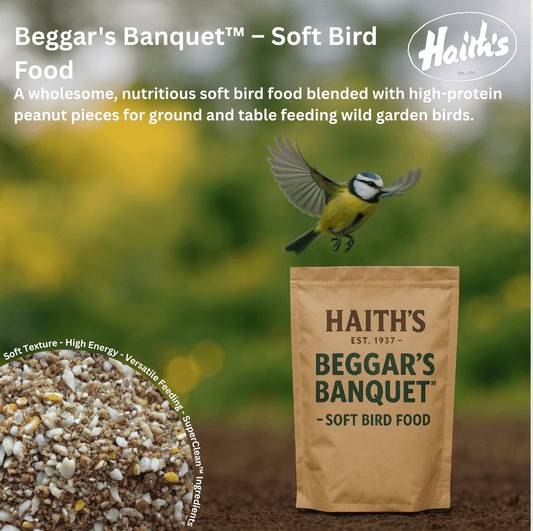
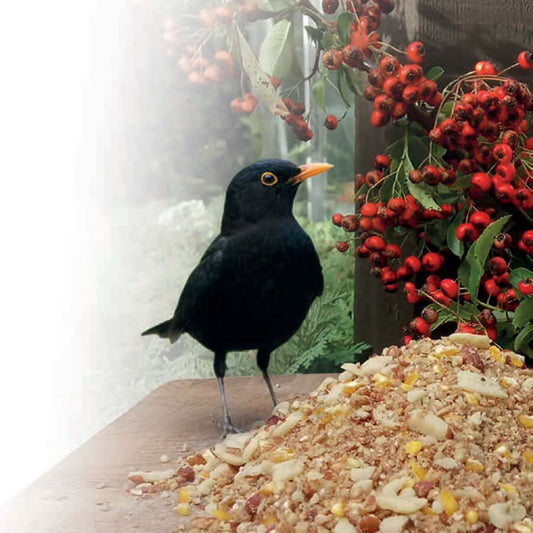 Sold out
Sold outBeggar's Banquet™ – Soft Bird Food
Vendor:HAITH'S to HOME4.76 / 5.0
(17) 17 total reviews
Regular price From £7.99 GBPRegular priceUnit price / per£7.99 GBPSale price From £7.99 GBPSold out



